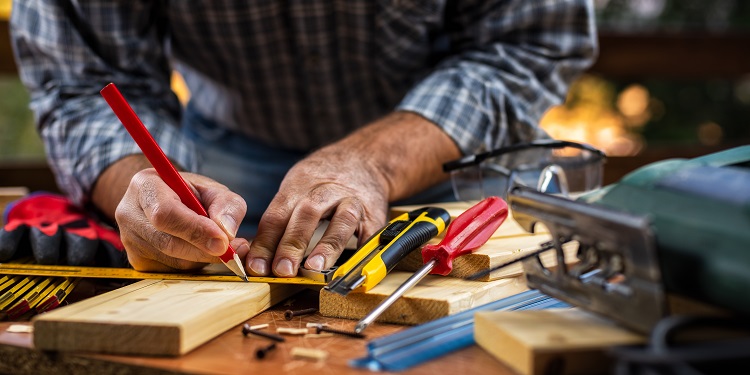The Many Uses of the Carpenter Pencil

As a carpenter by trade, a carpenter pencil has been a mainstay in my tool belt for as long as I can remember. Those unique, rectangular pencils tend to catch people’s attention, especially if they've never seen one before. Many wonder why these pencils have such an unusual shape, so I thought I’d share a bit about their design and why they’re essential on any job site.
Why the Shape? Unlike your typical round pencil, a carpenter pencil is rectangular (usually ¼ inch x ½ inch x 7 inches). This shape isn’t just for looks—it’s practical. The flat sides make it easy to grip and prevent the pencil from rolling off slanted surfaces, which is a lifesaver when you’re working on a roof or uneven ground.
Built for Durability and Versatility A carpenter pencil is designed to handle the rough and tumble of construction environments. The sturdy lead can withstand the pressure of marking on tough surfaces, making it a reliable tool for all kinds of materials. And it’s not just for marking lines—it can also serve as a quick gauge. For instance, when I’m building a deck, the pencil’s ¼-inch width can be used to space deck boards precisely. With wood boards, I like to install them tightly to allow for natural shrinkage over time, but for PVC decking, a ¼-inch gap (pencil-width) works perfectly.
Sharpening Techniques for Every Job One of the best parts about a carpenter pencil is how adaptable it is depending on how you sharpen it. Using a well-sharpened carpenter pencil to mark lumber cannot be matched. The rectangular graphite lead draws better on wood, stays sharper longer, and is less prone to breakage. A carpenter pencil is sharpened by whittling the end with a utility knife. Some carpenters sharpen both ends at the beginning of the day.
Here are some of the ways to sharpen a carpenter pencil:
- Standard Sharpening: Creating a sharp edge along the pencil’s length, like an axe blade, gives a fine 1/8-inch scribe. Perfect for most marking needs on wood.
- Offset Sharpening: For a broader scribe (about 3/8 inch), this sharpening style is useful for quick, bold marks where precision isn’t crucial.
- Project Point Sharpening: For tight, precise scribing, a belt sander can help shave one flat side down to reach the exact plane—ideal for finer work in small spaces.
- Blunt Sharpening: Exposing the full rectangular lead without an edge makes this pencil perfect for marking rough surfaces like concrete or brick, where you need a heavy, durable mark.
Round Lead for Fine Work Some carpenter pencils come with round lead, which holds a point better than the traditional flat lead. For trim work, I prefer using a round pencil because it offers better control and precision, especially on miters. And it fits behind my ear nicely when I need to keep my hands free!
For those who haven’t tried a carpenter pencil, I’d say give it a shot. It might look different, but once you get used to it, you’ll see why it’s a trusted tool in the industry. Whether you’re marking wood, using it as a spacer, or drawing on rough surfaces, a carpenter pencil is a small but mighty asset on the job.
An insurance company that cares about you and insuring the things you wish to be insured.
Get a Quote> Find an Agent>

